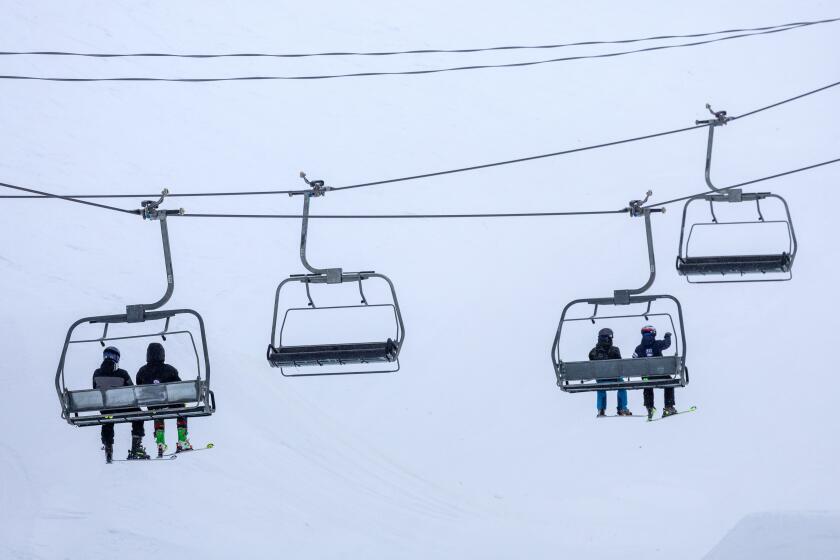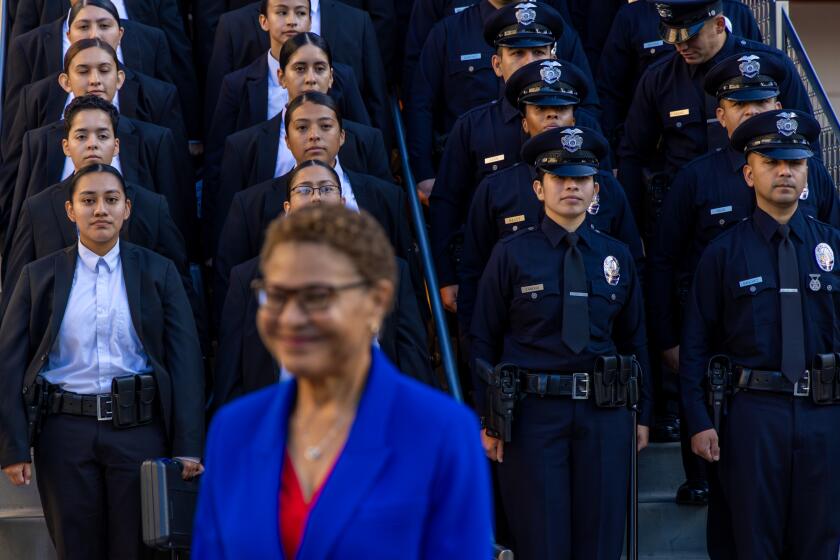Soon No Site Will Be Off-Limits for Garbage Disposal
- Share via
Los Angeles is facing an enormous trash-disposal crisis. As solutions are explored, it is of paramount importance to ensure that neither valuable recreational areas nor residential communities are destroyed by the placement of landfills.
We have co-authored a bill (AB 1489) to prohibit new landfills in the wilderness of the Santa Monica National Recreation Area and to bar expansion of Lopez and Sunshine Canyon landfills in the rim of the Valley Trail Corridor in the northern San Fernando Valley, an area connecting more than 25 major parks.
On the surface the problem seems bothersome only to nearby residents. Foul odors and a few sea gulls flocking around trash do not create a citywide crisis. But the problems brewing inside the landfills affect all of us.
Every day 42,000 tons of trash and garbage are transported from metropolitan Los Angeles to surrounding canyons. When one canyon is filled, the garbage trucks and bulldozers simply move on to the next.
Trapped within those pyramids of trash and dirt is a seething caldron. Covered by a thin veneer of soil, some of the most toxic substances known are creeping into the ground water; methane and toxic gas concentrates are the inexorable result of our “out-of-sight, out-of-mind” approach.
We can’t ignore the problem any longer. The canyons are filling up. Permits for the landfills in the northern San Fernando Valley, West Covina and Puente Hills will expire in the early 1990s. With enraged communities situated next to each of these landfills, it is unlikely that regulatory agencies will allow the level of dumping necessary for existing landfills to handle the endless output of household, commercial and industrial waste.
Where can the trash go? The Los Angeles County Sanitation District has identified three canyons within the Santa Monica Mountains National Recreation Area, part of the national park system, as the solution.
Incredibly, the sanitation district has targeted Rustic and Sullivan canyons--the last open space within the Santa Monica Mountains National Recreation Area in the City of Los Angeles--a pristine area in Pacific Palisades bordered on three sides by a state park, a Boy Scout camp and a drinking-water storage reservoir. Worse still, Mission Canyon (just southwest of the intersection of Mulholland Highway and the San Diego Freeway), the third in the string of proposed sites, is directly adjacent on the north and south to residential subdivisions and on the northern edge to four elementary schools and the largest church in the region.
County Sanitation also seeks to expand Lopez and Sunshine canyon dump sites in the northern San Fernando Valley--also close to homes and recreation areas.
Why this flight from reason? While the surface debate revolves over which jurisdictions have accepted their “fair share” of garbage, the real cause is shortsightedness about which set of constituents get stuck with the contamination and aesthetic liabilities. If cutting off the tops of hills and filling canyons with garbage is not the solution, what is? The alternatives are not appealing. If an easy answer existed, it would have been adopted years ago.
Only a finite number of things can be done with trash: It can be burned, separated into recyclable components (metal and glass), buried in landfills or dumped into the ocean (which is and should remain illegal), or a combination of these things.
Household recycling has promise. Changing our habits even slightly could make a big difference. Residents in parts of West Los Angeles are participating in a voluntary recycling project funded by the state and the city; 70% of the residents are separating glass and recyclable metals from other trash. At a cost of only $1 per household per month, this effort has achieved a 7% weight reduction in total trash collected for the area.
Los Angeles must be more ambitious in pursuing recycling programs. New York City and New Jersey both have adopted promising recycling programs. In California, successful programs operate in Santa Monica, San Jose, Berkeley and Oakland.
Burning trash also has appeal. Who can fault the “waste-to-energy” concept? Yet, just like the home trash incinerators that were banned long ago in Los Angeles, so-called “waste-to-energy” plants like the LANCER project may emit unsafe levels of pollutants. Yet even if the various LANCER-type projects eventually get the go-ahead, a new Los Angeles landfill still will be necessary within six years.
We must confront the probability that between now and 1991, when the Sunshine Canyon and Puente Hills landfill permits expire, neither alternative technologies nor recycling will have reduced the waste stream sufficiently to avoid the question, “If not in my backyard, where?” The answer must be: Not in anyone’s backyard.
We must accept the cost of placing future landfills in remote sites. Landfills, which emit toxic gas and gas condensate for generations even when closed to future dumping, must not be sited next to residential communities. Buffer zones should be established, but we should think in terms of miles rather than thousands of feet.
Landfills unquestionably must be a part of our plan for waste-disposal management. In our rush to solve the current crisis, however, let’s make sure that we avoid irreparable harm to existing communities while also protecting our irreplaceable open spaces.
More to Read
Sign up for Essential California
The most important California stories and recommendations in your inbox every morning.
You may occasionally receive promotional content from the Los Angeles Times.










